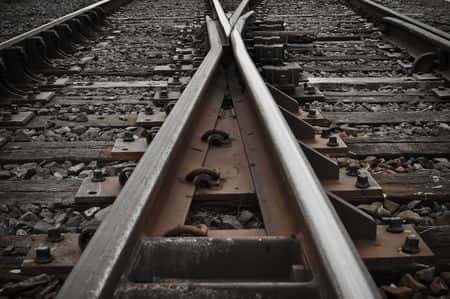Accident Reconstruction Expert Evaluates Fatal Train Crossing Crash
Updated on
This case involves a train accident that occurred on an unguarded railroad crossing involving a large work van. At the time of the accident, the van was being driven to a work site by an HVAC contractor when the driver encountered a detour in his route. The detour served to guide cars away from a guarded and paved railroad crossing to one that lacked any sort of guarding and was paved with gravel. As the van attempted to traverse the crossing it was struck by a fast-moving freight train, killing the driver. The train conductor later claimed to have sounded his whistle several times while approaching the crossing.
Question(s) For Expert Witness
1. What experience do you have as an accident reconstructionist for train collisions?
2. Are you familiar with written protocols for trains?
Expert Witness Response E-016430
 I am an expert in various aspects of collision reconstruction. I have a undergraduate degree in Mechanical Engineering, a master's in Biomedical Engineering, and PhD in Aerospace Engineering. Currently, I investigate complex vehicular collisions, collisions and incidents involving bodily injury, and mechanical systems failures. I have done numerous complex collision reconstruction cases involving automobiles, trucks, tractor trailers, bicycles and motorcycles. I have done cases that also involve lines-of-sight and audibility. I have also done collision reconstruction regarding trains; the extent of train collisions have involved lines of sight, and audibility of train signals. To establish the avoidability of the train in this collision, we would need to establish temporally when the first whistle was blown (indicating first perception of a hazard), the time to collision from this first whistle, and the maximum braking rate of the train. Other issues to investigate are the visibility of the approaching train by the crossing vehicle - whether it met the relevant design standards and whether it was hazardous. As far as the protocols are concerned, it would be necessary to obtain the train operator's manual for procedures to outline the protocol. Additionally, it would be necessary to require records of the load being carried and the typical stopping distances as a function of load for a given locomotive. Finally, the audibility of the train's whistle may need to be investigated, given topology of the area to establish when it could have been heard within the vehicle.
I am an expert in various aspects of collision reconstruction. I have a undergraduate degree in Mechanical Engineering, a master's in Biomedical Engineering, and PhD in Aerospace Engineering. Currently, I investigate complex vehicular collisions, collisions and incidents involving bodily injury, and mechanical systems failures. I have done numerous complex collision reconstruction cases involving automobiles, trucks, tractor trailers, bicycles and motorcycles. I have done cases that also involve lines-of-sight and audibility. I have also done collision reconstruction regarding trains; the extent of train collisions have involved lines of sight, and audibility of train signals. To establish the avoidability of the train in this collision, we would need to establish temporally when the first whistle was blown (indicating first perception of a hazard), the time to collision from this first whistle, and the maximum braking rate of the train. Other issues to investigate are the visibility of the approaching train by the crossing vehicle - whether it met the relevant design standards and whether it was hazardous. As far as the protocols are concerned, it would be necessary to obtain the train operator's manual for procedures to outline the protocol. Additionally, it would be necessary to require records of the load being carried and the typical stopping distances as a function of load for a given locomotive. Finally, the audibility of the train's whistle may need to be investigated, given topology of the area to establish when it could have been heard within the vehicle.
Subscribe to our newsletter
Join our newsletter to stay up to date on legal news, insights and product updates from Expert Institute.
Sign up nowFind an expert witness near you
What State is your case in?
Subscribe to our newsletter
Join our newsletter to stay up to date on legal news, insights and product updates from Expert Institute.


